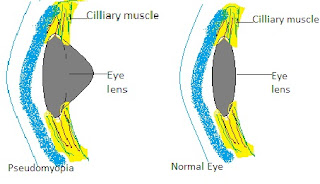Color Blindness
Color Blindness
Visual weakness is the powerlessness to recognize specific hues.It is commonly an acquired attribute, yet can result from a substance unevenness or eye injury.
Every other shading are the consequences of various blends of essential hues.
Exceptional visual cells, called cones, are liable for our capacity to see shading.
Individuals with typical vision have three unique kinds of cones, each liable for an alternate essential shading.
The nonappearance of specific cones causes the nonattendance of specific hues.
types
Visual impairment (likewise spelled partial blindness) or shading vision lack (CVD) incorporates a wide scope of causes and conditions and is quite mind boggling. Typically when individuals talk about partial blindness, they are alluding to the most widely recognized types of red-green visual impairment, which are hereditary conditions brought about by a latent quality on the X-chromosome, however there are different sorts too.
Red-green visual impairment can be separated into two fundamental sorts: Protan-type ("expert tan"), which is a confusion of the first "prot-" kind of retinal cones likewise called the L-cones, and Deutan-type ("do-tan") which is a turmoil of the second kind of retinal cone additionally called the M-cones.
try to read Ishihara book .If you can read this book You are not colo-blind.
TYPES OF COLOR-BLINDNESS
Protan Color Blindness
Protan Color Blindness ("professional tan") is a peculiarity of the "L" cones."L" represents Long Wavelength Light, which is by and large observed as red light, principally liable for seeing red hues. In Protan-type CVD, the ghostly affect-ability of the L-cone is moved toward shorter frequencies, with the goal that it doesn't get enough red light, and gets an excess of green light contrasted with a typical L-cone. Protan-type CVD incorporates protanomaly, which is an incomplete move of the L-cone, and protanopia, which is a finished move of the L-cone. It is assessed that 25% of instances of red-green partial blindness are of the protan type.
An individual with protan type visual impairment will in general observe greens, yellows, oranges, reds, and browns as being more comparable shades of shading than typical, particularly in low light. A typical issue is that purple hues look progressively like blue. Another regular issue is that pink hues seem, by all accounts, to be dim, particularly if the pink is a progressively rosy pink or salmon shading. Another indication explicit to protan shading vision insufficiency is that red hues look darker than typical. For instance, if red content is imprinted on a dark foundation, it tends to be difficult to peruse in light of the fact that the red gives off an impression of being exceptionally dull.
Somebody with ordinary shading vision seeing purple blossoms.
Those with visual impairment may confuse purple with blue.
Those with Deuteranomaly visual impairment may confuse purple with blue.
Deutan Color Blindness
Deutan Color Blindness ("do-tan") is an oddity of the "M" cone. The "M" represents Medium Wavelength Light, which is for the most part observed as green light. In Deutan-type CVD, the unearthly affectability of the M-cone is moved toward longer frequencies with the goal that it successfully gets a lot of red light and insufficient green light.
An individual with deutan shading vision inadequacy may encounter disarrays between hues, for example, green and yellow, or blue and purple. Another normal side effect is that green traffic signals have all the earmarks of being an exceptionally light green or in some cases white. Basic shading disarray likewise happens among pink and dark or white, particularly if the pink is like a light purple.
Tritan Color Blindness/Tritanomaly
Tritan Color Blindness ("attempt tan") incorporates tritanomaly and tritanopia. It is additionally some of the time called blue-yellow visual weakness. Tritan partial blindness most regularly gained sometime down the road because of maturing of the eye or an ailment, for example, glaucoma and is without a doubt, once in a while acquired from birth. Tritan shading vision is by and large described by a decreased affectability in the blue-delicate "S" cone cells. "S" represents Short Wavelength Light. The retinal S-cone cells make up just about 1% of the around 6 million retinal cone cells, so when they are harmed or not working appropriately, it can without much of a stretch reason a debasement to shading vision. Normally an individual with a tritan-type shading vision lack doesn't see blue hues well, and may experience issues seeing the contrast among blue and green. Waterfalls, glaucoma, and age-related macular degeneration can cause side effects of tritan visual weakness. Another factor that makes decreased affectability blue is the yellowing of the crystalline focal point inside the eye: these phones don't recover and over a lifetime of introduction to light, particularly UV light, the focal point will in general become yellow in appearance and square the transmission of blue light, meddling with shading vision. In the end this yellowing additionally prompts waterfalls that must be dealt with carefully.
Monochromacy and Achromatopsia
Monochromacy and Achromatopsia portrays a scope of conditions that incorporate bar Monochromacy, S-cone Monochromacy and Achromatopsia. Now and then these are all in all alluded to as kinds of achromatopsia, as "achromat" signifying "no shading." However, not all instances of achromatopsia have "no shading" vision. Like different types of visual weakness, achromatopsia can be evaluated as deficient (fractional) achromatopsia or complete achromatopsia (all out partial blindness). Achromatopsia is frequently connected with light affectability, photophobia, and glare affectability. Now and again, low vision issue, for example, dynamic cone dystrophy or retinitis pigmentosa can cause a continuous disintegration of shading vision that in the long run transforms into complete achromatopsia.
Trichromats, Dichromats, Monochromats are terms utilized in the vision science network to allude to various potential designs of the human visual framework having three (tri-), di (two) or one (mono) station of shading data. Notwithstanding, these terms are disentangled, all things considered, in light of the fact that the genuine ability of a shading vision framework additionally relies upon the level of cover between the channels, "perceptual commotion" inside the channels, and the intellectual preparing capacity for interpreting these signs in the visual cortex of the cerebrum. Most instances of visual weakness are viewed as odd trichromacy which implies they are successfully working at somewhere close to trichromat (typical shading vision with 3 channels) and dichromat (2 channels).
The EnChroma Color Blind Test is explicitly intended to decide your kind of red-green partial blindness (deutan or protan) and level: mellow deutan or protan, moderate deutan or protan, or solid deutan or protan. Anyway there are cutoff points to what can be tried with a self-directed online test. On the off chance that you accept that you may have a shading vision insufficiency, EnChroma suggests getting a total eye test by a certified eye care proficient.



Comments
Post a Comment